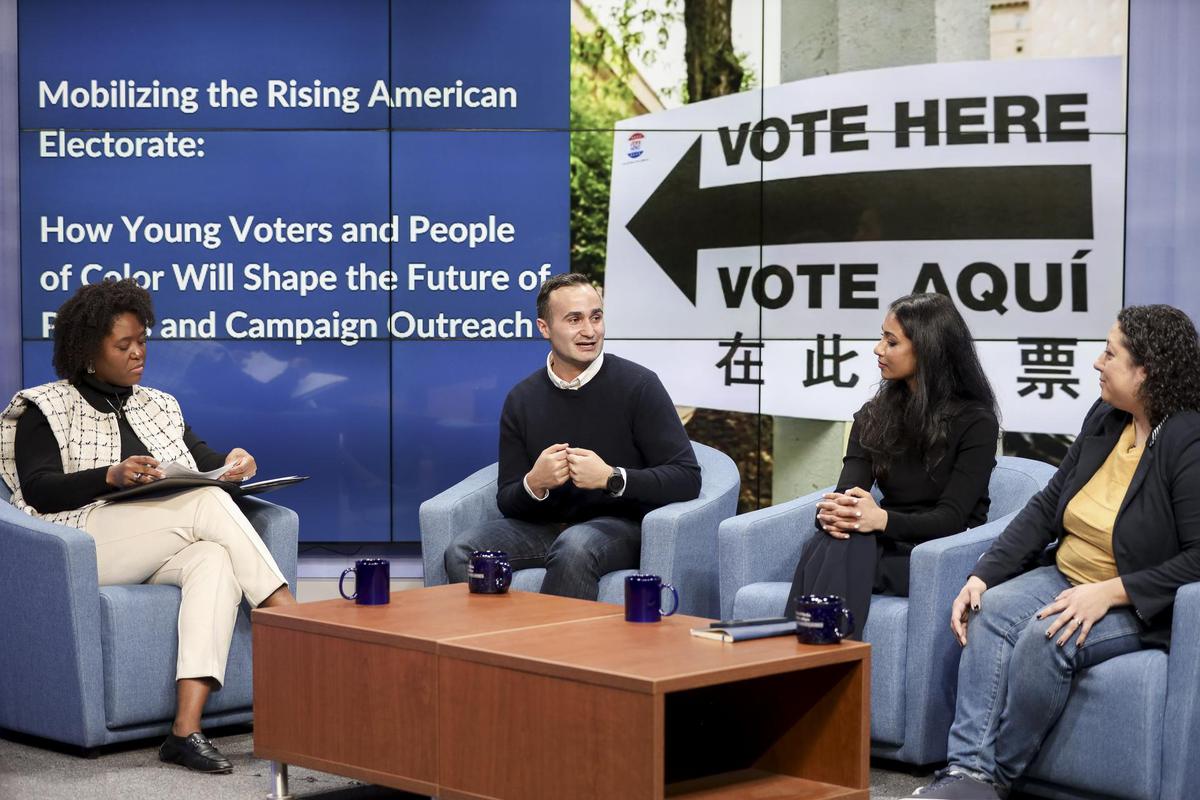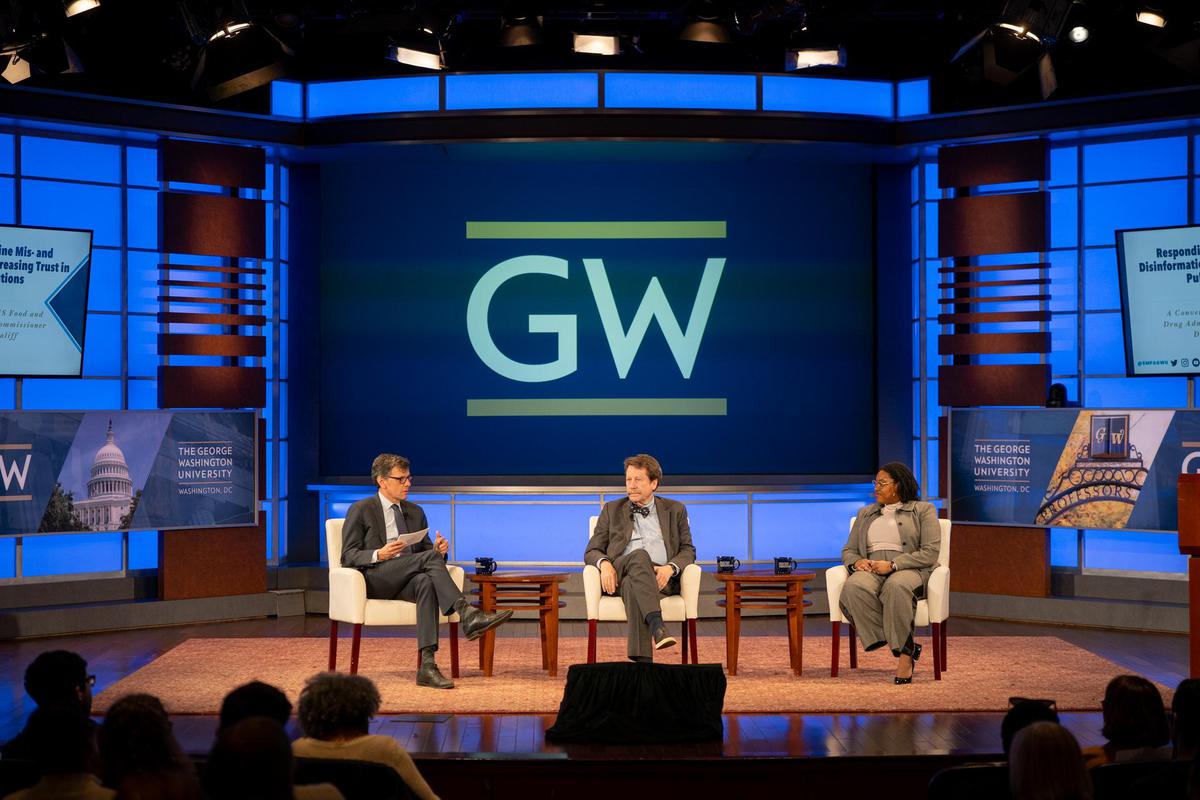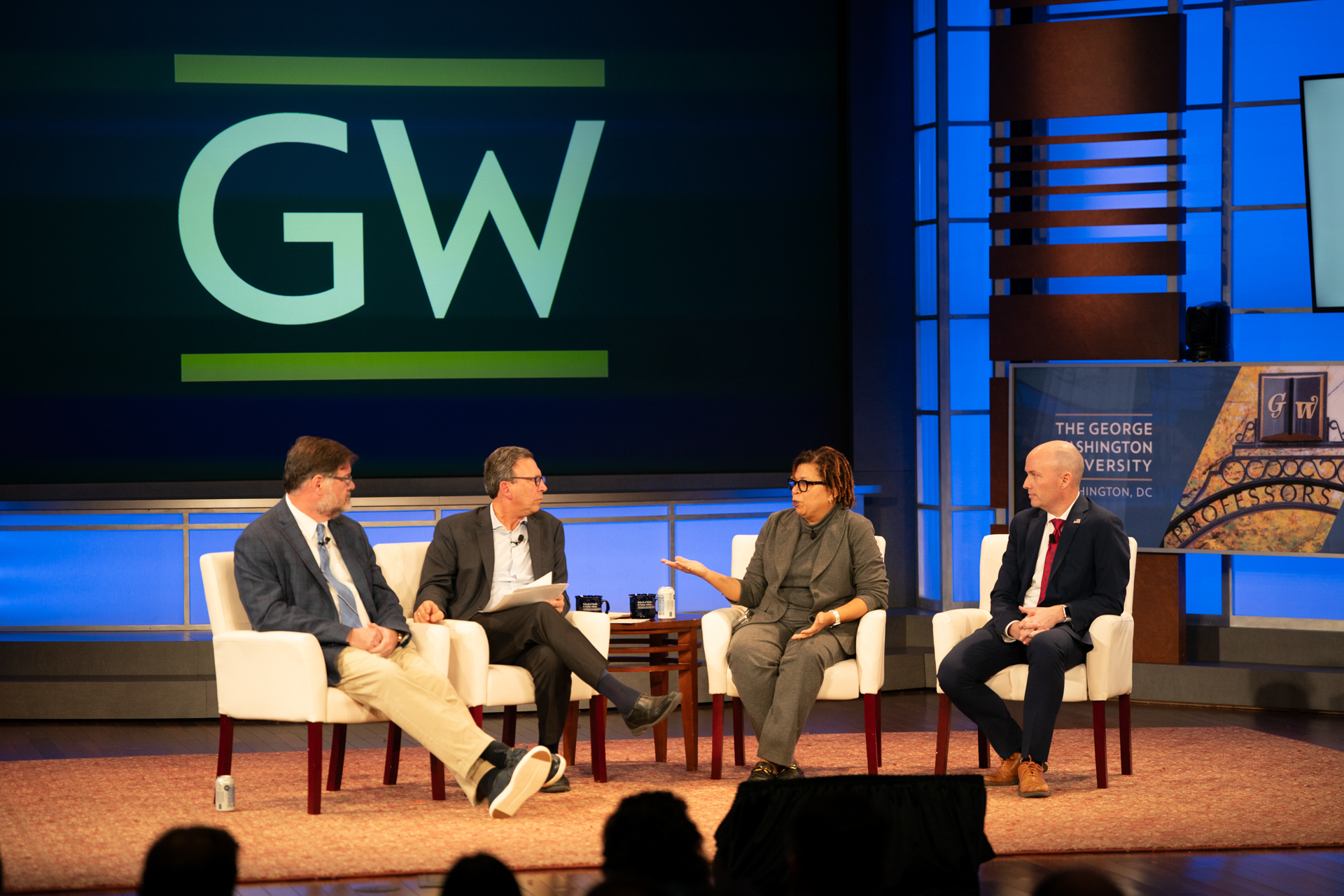Eight million youth are aging into the electorate this year, nearly half of whom are people of color, and 40.8 million of Gen Z will vote this year, Jade Floyd, Global Strategy Group’s executive vice president of communications and public affairs, told a gathering Tuesday at George Washington University.
The occasion was a panel hosted by the School of Media and Public Affairs
Floyd moderated the panel
The voting population is changing, and the strategy and tactics of reaching evolving demographic populations is a major challenge. The digital world has become essential for outreach. The evening’s conversation revolved around how to improve the marketing of candidates, the role of influencers and cultural competency.
“In the digital space, one of the biggest things we’re trying to figure out is how do we reach young people and people of color there,” Tobar said.
More people, regardless of age, are using TikTok as a news feed, she added.
“These things are changing, and we have to have the ability to adapt. Communications, which is what I do, is no longer just dealing with your traditional press and in different languages. It has to include and involve a very close partnership with a digital team that knows how to speak to folks online.”
Candidates running for local school boards all the way up to presidential candidates must pay attention to social media to reach voters.
“You now have to show up in all of these places and try to communicate in ways that are authentic and make sense for both your constituents that you hope to lead and also who you are and your background,” Nunes said. “So it forces us to think about what’s our TikTok strategy, what’s our YouTube strategy, how are we communicating on Twitter and Facebook.”
Voter apathy is an election constant, but getting voters to engage in local politics and making sure they know the differences between candidates and why those matter are ways to address apathy.
Govindarao pointed out that while a lot of younger voters are “disillusioned” with Donald Trump and Joe Biden, “even if they’re abstaining from the top of the ticket, a lot of times they are energized about those down-ballot races.”
The entire ballot matters because the winners create policies that affects the daily lives of Americans, from the prices at the grocery store and the gas pump to what children learn at school, the panelists said.
Political campaigns have to make the differences between the candidates clear. “What did Donald Trump get done when he was president? He gave tax cuts to millionaires and billionaires,” Nunes said. In contrast, Biden offers “a more appealing, hopeful, inclusive vision for our generation.”
Social media can increase the inclusivity of campaigns, and the panel discussed how influencers hold the key to outreach.
“The campaigns have to be comfortable in sort of letting go a little bit of the grip of power and say that we’re empowering these influencers to talk about these issues,” Nunes said. “They might get a specific figure wrong … there’s going to be these things that happen that are not ideal in how we would message it, but they’re talking authentically to their audience.”
Speaking effectively with authenticity requires the skill of cultural competence. Campaigns must understand the nuances of the subgroups in various demographics to improve messaging. It’s no longer good enough to create a Spanish website that’s poorly translated, Tobar said as an example.
“Now, cultural competence is more at a place of understanding that a Mexican American in Phoenix is not the same as a Mexican American who calls himself ‘Chicano’ in LA, as a Guatemalan in Rhode Island, or as a Puerto Rican in Pennsylvania,” she explained.
Demographic voting blocks are “not monolithic,” Govindarao said. “Vietnamese voters are far more conservative than Indian voters that tend to be more Democratic, but even within that you see generational gaps,” she added as an example.
Diversity in the people running campaigns and reporting news is needed, the panelists argued.
“It is a capacity and a talent problem … How we build a talent base within our party that reflects the diversity in the electorates we’re trying to turn out really matters,” Nunes said.




